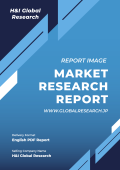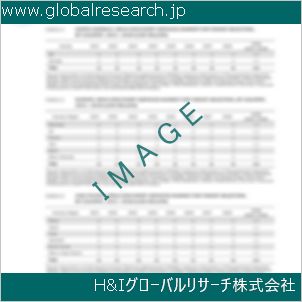1 Oxygen Sensor for Automobile Market Overview
1.1 Product Definition
1.2 Oxygen Sensor for Automobile Segment by Type
1.2.1 Global Oxygen Sensor for Automobile Market Value Growth Rate Analysis by Type 2022 VS 2029
1.2.2 Zirconium Dioxide
1.2.3 Titanium Dioxide
1.3 Oxygen Sensor for Automobile Segment by Application
1.3.1 Global Oxygen Sensor for Automobile Market Value Growth Rate Analysis by Application: 2022 VS 2029
1.3.2 Passenger Vehicle
1.3.3 Commercial Vehicle
1.4 Global Market Growth Prospects
1.4.1 Global Oxygen Sensor for Automobile Production Value Estimates and Forecasts (2018-2029)
1.4.2 Global Oxygen Sensor for Automobile Production Capacity Estimates and Forecasts (2018-2029)
1.4.3 Global Oxygen Sensor for Automobile Production Estimates and Forecasts (2018-2029)
1.4.4 Global Oxygen Sensor for Automobile Market Average Price Estimates and Forecasts (2018-2029)
1.5 Assumptions and Limitations
2 Market Competition by Manufacturers
2.1 Global Oxygen Sensor for Automobile Production Market Share by Manufacturers (2018-2023)
2.2 Global Oxygen Sensor for Automobile Production Value Market Share by Manufacturers (2018-2023)
2.3 Global Key Players of Oxygen Sensor for Automobile, Industry Ranking, 2021 VS 2022 VS 2023
2.4 Global Oxygen Sensor for Automobile Market Share by Company Type (Tier 1, Tier 2 and Tier 3)
2.5 Global Oxygen Sensor for Automobile Average Price by Manufacturers (2018-2023)
2.6 Global Key Manufacturers of Oxygen Sensor for Automobile, Manufacturing Base Distribution and Headquarters
2.7 Global Key Manufacturers of Oxygen Sensor for Automobile, Product Offered and Application
2.8 Global Key Manufacturers of Oxygen Sensor for Automobile, Date of Enter into This Industry
2.9 Oxygen Sensor for Automobile Market Competitive Situation and Trends
2.9.1 Oxygen Sensor for Automobile Market Concentration Rate
2.9.2 Global 5 and 10 Largest Oxygen Sensor for Automobile Players Market Share by Revenue
2.10 Mergers & Acquisitions, Expansion
3 Oxygen Sensor for Automobile Production by Region
3.1 Global Oxygen Sensor for Automobile Production Value Estimates and Forecasts by Region: 2018 VS 2022 VS 2029
3.2 Global Oxygen Sensor for Automobile Production Value by Region (2018-2029)
3.2.1 Global Oxygen Sensor for Automobile Production Value Market Share by Region (2018-2023)
3.2.2 Global Forecasted Production Value of Oxygen Sensor for Automobile by Region (2024-2029)
3.3 Global Oxygen Sensor for Automobile Production Estimates and Forecasts by Region: 2018 VS 2022 VS 2029
3.4 Global Oxygen Sensor for Automobile Production by Region (2018-2029)
3.4.1 Global Oxygen Sensor for Automobile Production Market Share by Region (2018-2023)
3.4.2 Global Forecasted Production of Oxygen Sensor for Automobile by Region (2024-2029)
3.5 Global Oxygen Sensor for Automobile Market Price Analysis by Region (2018-2023)
3.6 Global Oxygen Sensor for Automobile Production and Value, Year-over-Year Growth
3.6.1 North America Oxygen Sensor for Automobile Production Value Estimates and Forecasts (2018-2029)
3.6.2 Europe Oxygen Sensor for Automobile Production Value Estimates and Forecasts (2018-2029)
3.6.3 China Oxygen Sensor for Automobile Production Value Estimates and Forecasts (2018-2029)
3.6.4 Japan Oxygen Sensor for Automobile Production Value Estimates and Forecasts (2018-2029)
3.6.5 South Korea Oxygen Sensor for Automobile Production Value Estimates and Forecasts (2018-2029)
3.6.6 India Oxygen Sensor for Automobile Production Value Estimates and Forecasts (2018-2029)
4 Oxygen Sensor for Automobile Consumption by Region
4.1 Global Oxygen Sensor for Automobile Consumption Estimates and Forecasts by Region: 2018 VS 2022 VS 2029
4.2 Global Oxygen Sensor for Automobile Consumption by Region (2018-2029)
4.2.1 Global Oxygen Sensor for Automobile Consumption by Region (2018-2023)
4.2.2 Global Oxygen Sensor for Automobile Forecasted Consumption by Region (2024-2029)
4.3 North America
4.3.1 North America Oxygen Sensor for Automobile Consumption Growth Rate by Country: 2018 VS 2022 VS 2029
4.3.2 North America Oxygen Sensor for Automobile Consumption by Country (2018-2029)
4.3.3 United States
4.3.4 Canada
4.4 Europe
4.4.1 Europe Oxygen Sensor for Automobile Consumption Growth Rate by Country: 2018 VS 2022 VS 2029
4.4.2 Europe Oxygen Sensor for Automobile Consumption by Country (2018-2029)
4.4.3 Germany
4.4.4 France
4.4.5 U.K.
4.4.6 Italy
4.4.7 Russia
4.5 Asia Pacific
4.5.1 Asia Pacific Oxygen Sensor for Automobile Consumption Growth Rate by Region: 2018 VS 2022 VS 2029
4.5.2 Asia Pacific Oxygen Sensor for Automobile Consumption by Region (2018-2029)
4.5.3 China
4.5.4 Japan
4.5.5 South Korea
4.5.6 China Taiwan
4.5.7 Southeast Asia
4.5.8 India
4.6 Latin America, Middle East & Africa
4.6.1 Latin America, Middle East & Africa Oxygen Sensor for Automobile Consumption Growth Rate by Country: 2018 VS 2022 VS 2029
4.6.2 Latin America, Middle East & Africa Oxygen Sensor for Automobile Consumption by Country (2018-2029)
4.6.3 Mexico
4.6.4 Brazil
4.6.5 Turkey
5 Segment by Type
5.1 Global Oxygen Sensor for Automobile Production by Type (2018-2029)
5.1.1 Global Oxygen Sensor for Automobile Production by Type (2018-2023)
5.1.2 Global Oxygen Sensor for Automobile Production by Type (2024-2029)
5.1.3 Global Oxygen Sensor for Automobile Production Market Share by Type (2018-2029)
5.2 Global Oxygen Sensor for Automobile Production Value by Type (2018-2029)
5.2.1 Global Oxygen Sensor for Automobile Production Value by Type (2018-2023)
5.2.2 Global Oxygen Sensor for Automobile Production Value by Type (2024-2029)
5.2.3 Global Oxygen Sensor for Automobile Production Value Market Share by Type (2018-2029)
5.3 Global Oxygen Sensor for Automobile Price by Type (2018-2029)
6 Segment by Application
6.1 Global Oxygen Sensor for Automobile Production by Application (2018-2029)
6.1.1 Global Oxygen Sensor for Automobile Production by Application (2018-2023)
6.1.2 Global Oxygen Sensor for Automobile Production by Application (2024-2029)
6.1.3 Global Oxygen Sensor for Automobile Production Market Share by Application (2018-2029)
6.2 Global Oxygen Sensor for Automobile Production Value by Application (2018-2029)
6.2.1 Global Oxygen Sensor for Automobile Production Value by Application (2018-2023)
6.2.2 Global Oxygen Sensor for Automobile Production Value by Application (2024-2029)
6.2.3 Global Oxygen Sensor for Automobile Production Value Market Share by Application (2018-2029)
6.3 Global Oxygen Sensor for Automobile Price by Application (2018-2029)
7 Key Companies Profiled
7.1 NGK
7.1.1 NGK Oxygen Sensor for Automobile Corporation Information
7.1.2 NGK Oxygen Sensor for Automobile Product Portfolio
7.1.3 NGK Oxygen Sensor for Automobile Production, Value, Price and Gross Margin (2018-2023)
7.1.4 NGK Main Business and Markets Served
7.1.5 NGK Recent Developments/Updates
7.2 Bosch
7.2.1 Bosch Oxygen Sensor for Automobile Corporation Information
7.2.2 Bosch Oxygen Sensor for Automobile Product Portfolio
7.2.3 Bosch Oxygen Sensor for Automobile Production, Value, Price and Gross Margin (2018-2023)
7.2.4 Bosch Main Business and Markets Served
7.2.5 Bosch Recent Developments/Updates
7.3 DENSO
7.3.1 DENSO Oxygen Sensor for Automobile Corporation Information
7.3.2 DENSO Oxygen Sensor for Automobile Product Portfolio
7.3.3 DENSO Oxygen Sensor for Automobile Production, Value, Price and Gross Margin (2018-2023)
7.3.4 DENSO Main Business and Markets Served
7.3.5 DENSO Recent Developments/Updates
7.4 Delphi
7.4.1 Delphi Oxygen Sensor for Automobile Corporation Information
7.4.2 Delphi Oxygen Sensor for Automobile Product Portfolio
7.4.3 Delphi Oxygen Sensor for Automobile Production, Value, Price and Gross Margin (2018-2023)
7.4.4 Delphi Main Business and Markets Served
7.4.5 Delphi Recent Developments/Updates
7.5 Kefico
7.5.1 Kefico Oxygen Sensor for Automobile Corporation Information
7.5.2 Kefico Oxygen Sensor for Automobile Product Portfolio
7.5.3 Kefico Oxygen Sensor for Automobile Production, Value, Price and Gross Margin (2018-2023)
7.5.4 Kefico Main Business and Markets Served
7.5.5 Kefico Recent Developments/Updates
7.6 UAES
7.6.1 UAES Oxygen Sensor for Automobile Corporation Information
7.6.2 UAES Oxygen Sensor for Automobile Product Portfolio
7.6.3 UAES Oxygen Sensor for Automobile Production, Value, Price and Gross Margin (2018-2023)
7.6.4 UAES Main Business and Markets Served
7.6.5 UAES Recent Developments/Updates
7.7 VOLKSE
7.7.1 VOLKSE Oxygen Sensor for Automobile Corporation Information
7.7.2 VOLKSE Oxygen Sensor for Automobile Product Portfolio
7.7.3 VOLKSE Oxygen Sensor for Automobile Production, Value, Price and Gross Margin (2018-2023)
7.7.4 VOLKSE Main Business and Markets Served
7.7.5 VOLKSE Recent Developments/Updates
7.8 Pucheng Sensors
7.8.1 Pucheng Sensors Oxygen Sensor for Automobile Corporation Information
7.8.2 Pucheng Sensors Oxygen Sensor for Automobile Product Portfolio
7.8.3 Pucheng Sensors Oxygen Sensor for Automobile Production, Value, Price and Gross Margin (2018-2023)
7.8.4 Pucheng Sensors Main Business and Markets Served
7.7.5 Pucheng Sensors Recent Developments/Updates
7.9 Airblue
7.9.1 Airblue Oxygen Sensor for Automobile Corporation Information
7.9.2 Airblue Oxygen Sensor for Automobile Product Portfolio
7.9.3 Airblue Oxygen Sensor for Automobile Production, Value, Price and Gross Margin (2018-2023)
7.9.4 Airblue Main Business and Markets Served
7.9.5 Airblue Recent Developments/Updates
7.10 Trans
7.10.1 Trans Oxygen Sensor for Automobile Corporation Information
7.10.2 Trans Oxygen Sensor for Automobile Product Portfolio
7.10.3 Trans Oxygen Sensor for Automobile Production, Value, Price and Gross Margin (2018-2023)
7.10.4 Trans Main Business and Markets Served
7.10.5 Trans Recent Developments/Updates
7.11 PAILE
7.11.1 PAILE Oxygen Sensor for Automobile Corporation Information
7.11.2 PAILE Oxygen Sensor for Automobile Product Portfolio
7.11.3 PAILE Oxygen Sensor for Automobile Production, Value, Price and Gross Margin (2018-2023)
7.11.4 PAILE Main Business and Markets Served
7.11.5 PAILE Recent Developments/Updates
7.12 ACHR
7.12.1 ACHR Oxygen Sensor for Automobile Corporation Information
7.12.2 ACHR Oxygen Sensor for Automobile Product Portfolio
7.12.3 ACHR Oxygen Sensor for Automobile Production, Value, Price and Gross Margin (2018-2023)
7.12.4 ACHR Main Business and Markets Served
7.12.5 ACHR Recent Developments/Updates
8 Industry Chain and Sales Channels Analysis
8.1 Oxygen Sensor for Automobile Industry Chain Analysis
8.2 Oxygen Sensor for Automobile Key Raw Materials
8.2.1 Key Raw Materials
8.2.2 Raw Materials Key Suppliers
8.3 Oxygen Sensor for Automobile Production Mode & Process
8.4 Oxygen Sensor for Automobile Sales and Marketing
8.4.1 Oxygen Sensor for Automobile Sales Channels
8.4.2 Oxygen Sensor for Automobile Distributors
8.5 Oxygen Sensor for Automobile Customers
9 Oxygen Sensor for Automobile Market Dynamics
9.1 Oxygen Sensor for Automobile Industry Trends
9.2 Oxygen Sensor for Automobile Market Drivers
9.3 Oxygen Sensor for Automobile Market Challenges
9.4 Oxygen Sensor for Automobile Market Restraints
10 Research Finding and Conclusion
11 Methodology and Data Source
11.1 Methodology/Research Approach
11.1.1 Research Programs/Design
11.1.2 Market Size Estimation
11.1.3 Market Breakdown and Data Triangulation
11.2 Data Source
11.2.1 Secondary Sources
11.2.2 Primary Sources
11.3 Author List
11.4 Disclaimer
| ※参考情報 自動車用酸素センサーは、エンジンの燃焼効率を向上させるために、排気中の酸素レベルを測定する重要なデバイスです。このセンサーは、現代の自動車のエミッションコントロールシステムの中核をなしており、燃料と空気の混合比の最適化を実現します。酸素センサーの主な役割は、排気ガス中の酸素濃度を監視し、そのデータをエンジン制御ユニット(ECU)に送り、混合比を調整するための情報を提供することです。 この酸素センサーは、自動車のエンジンが効率よく燃焼を行い、燃費を改善し、排出ガスを減少させるために欠かせない部品です。燃焼プロセスにおいては、適切な空気と燃料の比率が非常に重要であり、その比率が適切でない場合、燃焼効率が悪化し、エネルギーの無駄が生じます。酸素センサーはこの比率を監視し、ECUが必要に応じて調整を行うことを可能にします。 酸素センサーにはさまざまな種類がありますが、主に二つのカテゴリーに分けられます。一つは、劣化を防ぐために一般的に使用される「ルビーセンサー」であり、もう一つは、高精度で多くの用途に使用される「ゼルセンサー」です。ルビーセンサーは、高温環境に耐えることができ、特に排気ガスが高温で排出される自動車に適しています。一方、ゼルセンサーは、反応が早く、酸素濃度の細かな変化を捉えることができるため、先進のエンジンにおいても高い精度での燃焼制御を行います。 これらのセンサーの主な用途は、エンジンの燃焼プロセスの監視と調整ですが、環境規制への対応も重要な役割を果たします。特に、近年の環境意識の高まりに伴い、多くの国で自動車の排出ガス基準が厳しくなっています。そのため、酸素センサーを利用したエミッションコントロールシステムは、エンジンが設定された排出基準を満たすために非常に重要です。適切な燃焼が行われることで、有害物質の排出を減少させることができ、環境保護に寄与します。 酸素センサーは、エンジンの効率性を向上させるだけでなく、車両の燃費向上にも寄与します。燃費が改善されることで、ドライバーは運転コストを削減でき、同時に二酸化炭素などの温室効果ガスの排出を抑制することができます。このような理由から、多くの自動車メーカーは、酸素センサーを搭載することを標準装備しています。 関連技術としては、エンジン制御ユニット(ECU)や燃料噴射システムが挙げられます。これらの技術と酸素センサーが連携することで、車両はリアルタイムでのデータを取得し、自動的に最適な燃焼条件を設定することが可能になります。ECUは、センサーから得られる情報をもとに、燃料の噴射量や点火時期を調整し、エンジンのパフォーマンスを最大化する役割を果たします。このようにして、酸素センサーは自動車技術の進化において欠かせない要素となっています。 また、近年では、ハイブリッド車や電気自動車の普及も進んでおり、これに伴って酸素センサーの技術も進化しています。これらの新しい動力源では、従来の内燃機関とは異なるエネルギー管理が求められ、それに対応するための新たなセンサー技術が開発されています。ハイブリッド車においては、燃焼エンジンと電動モーターを効率良く使い分ける必要があり、酸素センサーはそのシステムの中でエンジンの効率を高めるための重要な情報源とされています。 酸素センサーの設置は、通常はエンジンの排気管内に行われます。この位置に設置される理由は、排気ガス中の酸素濃度を最も正確に測定することができるからです。センサーが正確なデータを提供することで、エンジンの制御がより効果的に行われるため、車両の性能も向上します。各センサーは、一定の周期でデータを取得し、ECUに送信します。ECUは受け取ったデータを分析し、必要に応じて制御を行います。 酸素センサーは、定期的なメンテナンスや交換が必要です。劣化や汚れが原因で正確な測定ができなくなると、燃焼効率が悪化し、燃費の低下や排出ガスの増加を引き起こします。そのため、定期的な点検が推奨されています。特に、古い車両の場合は、酸素センサーが劣化しやすく、新しいセンサーへの交換が燃費改善につながります。 最後に、自動車用酸素センサーの技術は今後も進化していくことが期待されています。デジタル技術やAIの進展により、より高精度で効率的な酸素センサーの開発が進むでしょう。また、環境配慮から、省エネルギー技術の向上も求められており、これにより酸素センサーの重要性もますます高まっていくと考えられます。自動車の安全性や環境性能を向上させるためには、酸素センサーの技術革新が不可欠です。総じて、自動車用酸素センサーは、エンジンの燃焼制御や排出ガス管理において非常に重要な役割を果たしており、今後の自動車技術の進展に大きな影響を与えることが期待されます。 |
❖ 免責事項 ❖
http://www.globalresearch.jp/disclaimer

-gr.jpg)










